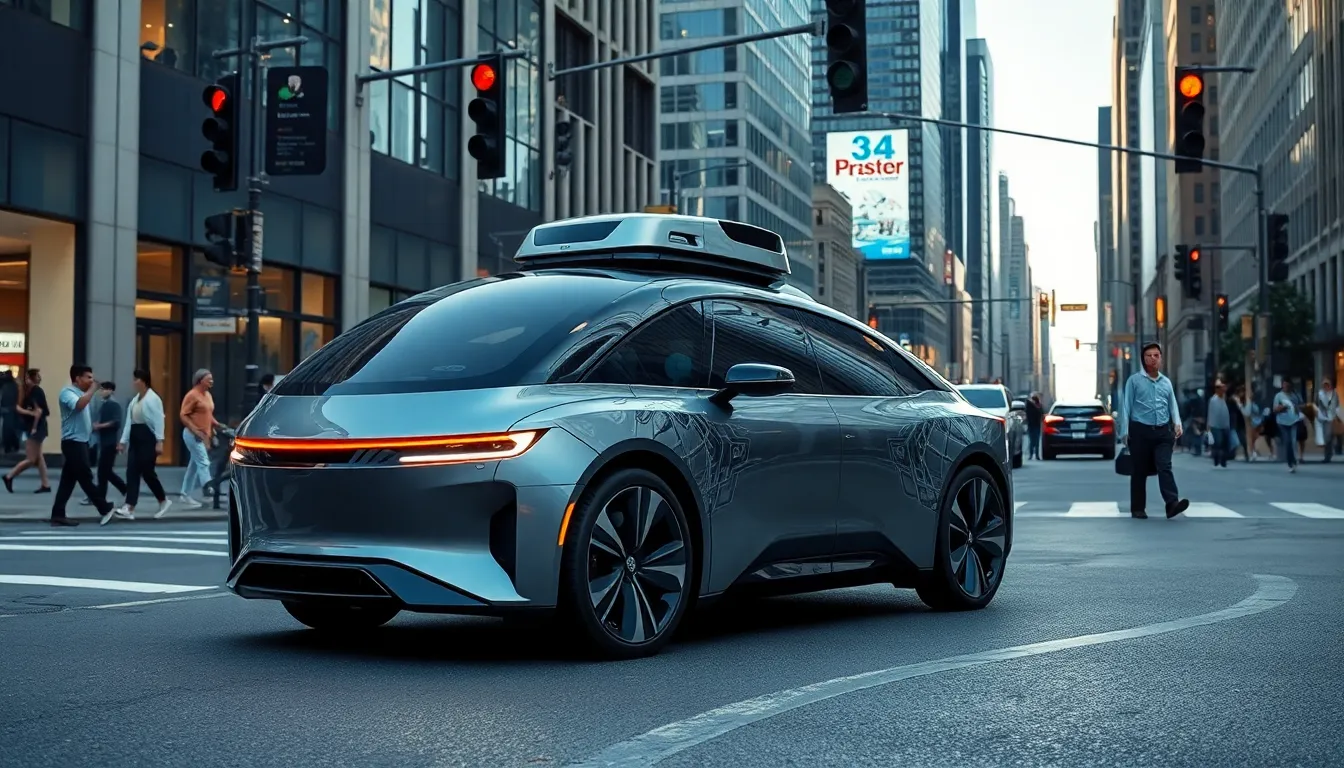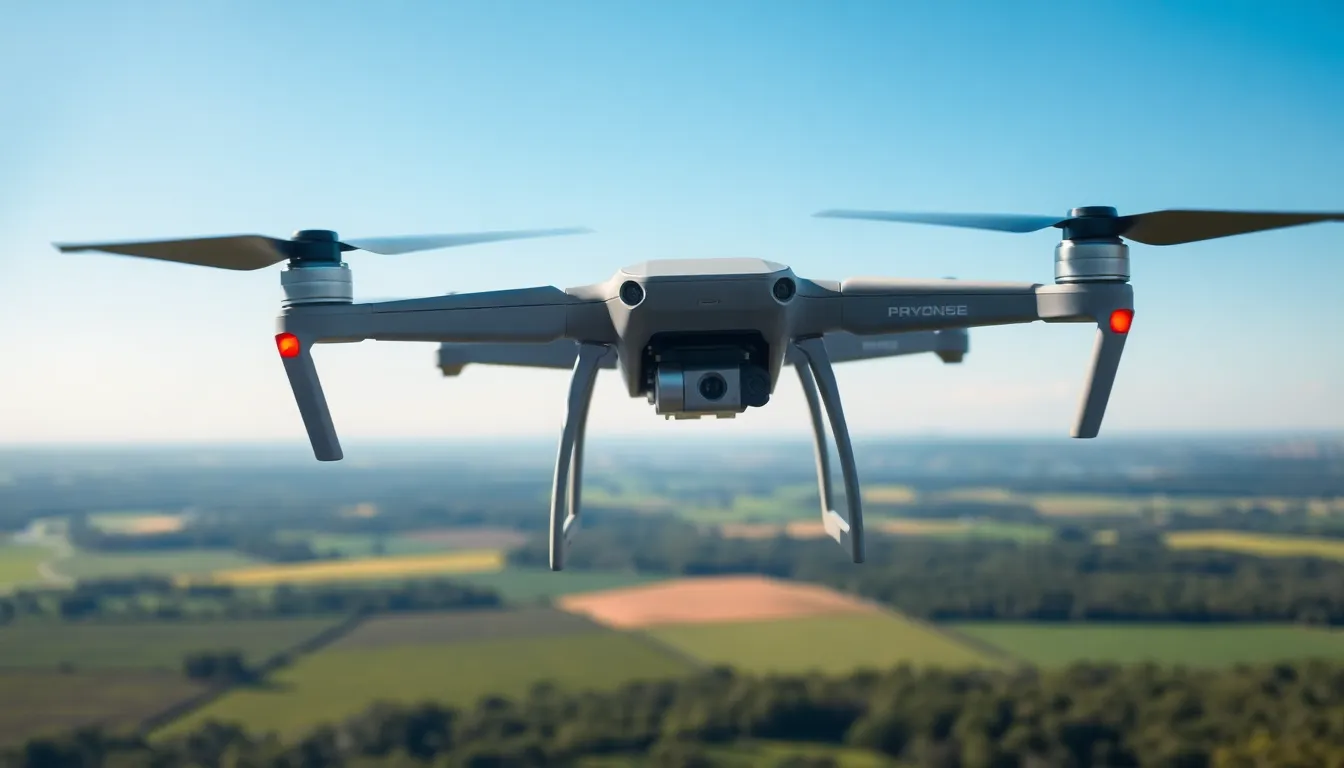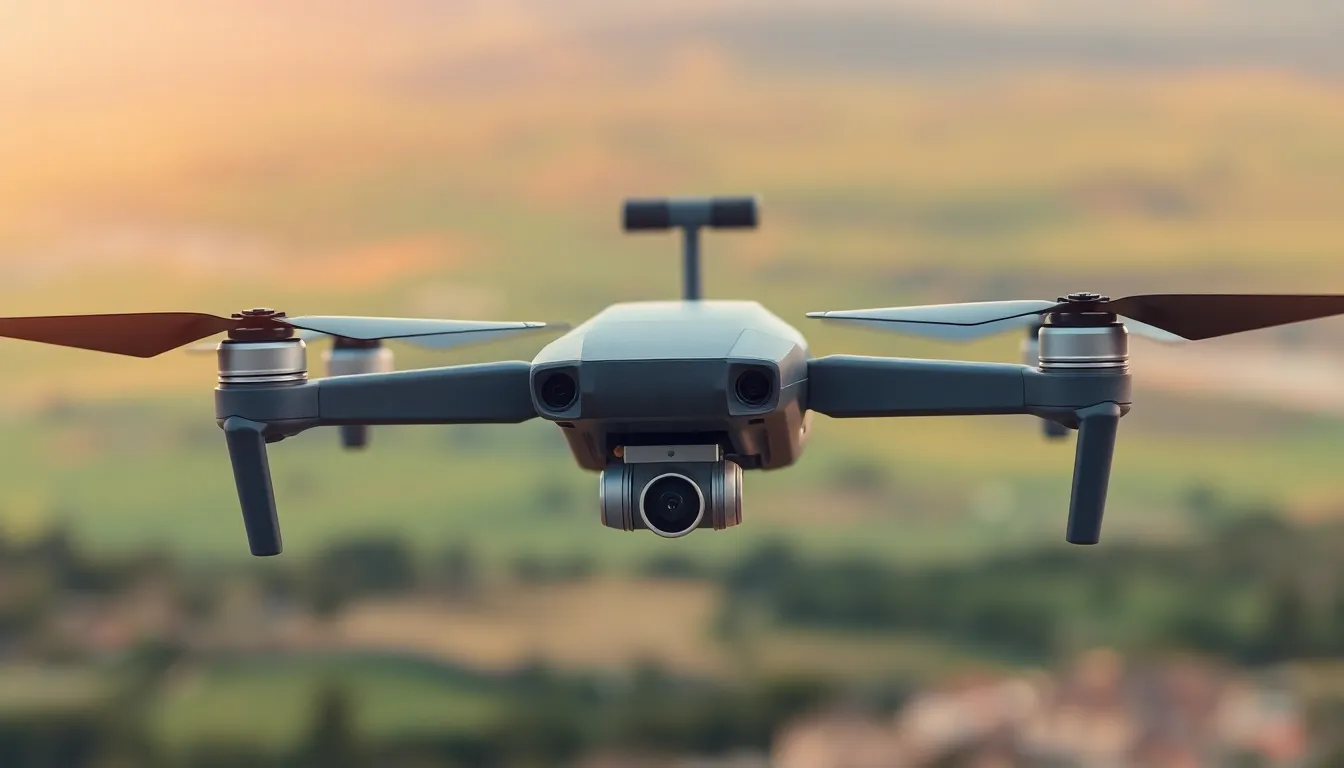Transportation is on the brink of a revolution, and AI is at the wheel. Imagine a world where your car can not only drive itself but also predict traffic jams before you even hit the road. It sounds like something out of a sci-fi movie, right? Well, buckle up because AI is turning that fantasy into reality faster than you can say “autonomous vehicle.”
From smart traffic lights to predictive maintenance, AI is transforming how we move. It’s not just about getting from point A to point B anymore; it’s about making the journey smoother, safer, and a lot more efficient. As cities grow and congestion becomes the norm, embracing AI in transportation isn’t just a luxury—it’s a necessity. So, let’s dive into how this technology is reshaping the roads we travel and why you should care.
Table of Contents
ToggleOverview of AI in Transportation
AI is significantly altering the landscape of transportation, influencing travel efficiency and safety. Innovations driven by AI pave the way for smarter mobility solutions.
Definition and Importance
AI in transportation refers to the utilization of advanced algorithms and machine learning to improve travel systems. Intelligent systems such as self-driving cars and traffic management tools enhance safety and reduce congestion. Efficiency increases as AI analyzes data in real-time, optimizing routes and minimizing delays. Consider the environmental impact as well; AI can lead to reduced emissions through better traffic flow. Decision-making capabilities improve significantly, allowing for safer road conditions.
Current Trends in AI Technology
Numerous trends are shaping the current AI technology landscape in transportation. Autonomous vehicles are gaining traction with companies like Tesla and Waymo leading developments. Ride-sharing apps benefit from AI-driven analytics, matching passengers with drivers swiftly. Smart traffic signals use AI to adapt to real-time conditions, enhancing throughput at intersections. Furthermore, predictive maintenance powered by AI helps fleet operators reduce downtime and maintenance costs. Each trend exemplifies AI’s growing role in transforming and optimizing transportation systems globally.
Applications of AI in Transportation

Artificial intelligence significantly impacts various sectors of transportation, enhancing safety, efficiency, and overall experience. Key applications illustrate how AI is driving change in this industry.
Autonomous Vehicles
Autonomous vehicles represent one of the most notable advancements in transportation. Companies like Waymo and Tesla are leading in this space, leveraging AI to enable cars to navigate without human intervention. These vehicles utilize sensors, cameras, and machine learning algorithms to assess surroundings and anticipate obstacles. They contribute to reduced traffic accidents by minimizing human error. Data from the U.S. Department of Transportation shows that fully autonomous cars could reduce crashes by up to 94%. This transformation in personal and public transportation could reshape urban mobility.
Traffic Management Systems
AI-enhanced traffic management systems optimize the flow of vehicles in urban environments. Smart traffic signals adapt in real-time based on traffic patterns, reducing congestion significantly. Cities implementing these systems, such as Los Angeles, have experienced a 20% improvement in traffic flow efficiency. Machine learning algorithms analyze vast amounts of traffic data, enabling proactive adjustments to signal timing and routing. These innovations not only enhance travel times but also decrease emissions by minimizing idle time at intersections.
Predictive Maintenance
Predictive maintenance utilizes AI to anticipate vehicle failures before they occur. By analyzing data from sensors on buses and trucks, AI can identify potential issues early and schedule maintenance proactively. This approach decreases downtime and extends the lifespan of vehicles. According to a study by McKinsey, predictive maintenance can reduce maintenance costs by up to 30%. Fleet operators benefit from improved reliability and operational efficiency as a result. Increased safety and performance effectiveness emerge as key advantages in managing transportation fleets.
Benefits of AI in Transportation
AI in transportation offers several critical advantages that enhance travel systems globally. These benefits encompass improved safety, operational efficiency, cost reductions, and environmental sustainability.
Improved Safety and Efficiency
AI significantly enhances safety and efficiency in transportation systems. Autonomous vehicles, developed by companies like Waymo and Tesla, navigate without human intervention, potentially reducing traffic accidents by up to 94%. AI-driven traffic management systems optimize traffic flow, resulting in increased efficiency; cities like Los Angeles have experienced up to a 20% improvement in traffic flow with smart signals. Enhanced route optimization allows for real-time adjustments that further minimize delays and maximize safety. Each innovation ensures safer journeys and a smarter approach to urban mobility.
Cost Reduction and Sustainability
AI contributes to substantial cost reductions in transportation while promoting sustainability. Predictive maintenance anticipates vehicle failures; studies show it can cut maintenance costs by up to 30%. By improving fleet performance, organizations optimize resource allocation, which leads to lower operating expenses. Moreover, AI aids in reducing emissions through optimized routing and traffic management, contributing to greener urban environments. Sustainable practices implemented through AI result in more eco-friendly transportation solutions that benefit society at large.
Challenges and Concerns
AI in transportation presents challenges and concerns that require attention as the technology evolves.
Ethical Considerations
Concerns about ethical implications arise with the rise of autonomous vehicles. Decision-making in emergencies relies on algorithms, potentially leading to ethical dilemmas. Questions about accountability surface when an accident occurs. Developers must address how to program moral choices into AI systems. Regulations will play a critical role in setting standards for these technologies. Stakeholders need to engage in discussions about the ethical frameworks guiding AI development. Transparency and public awareness can enhance understanding of these issues.
Data Privacy and Security
Data privacy and security issues represent significant challenges in AI transportation systems. Vehicle systems collect vast amounts of user data for optimal functioning. Protecting this data from breaches remains a top priority for manufacturers. Unauthorized access could lead to misuse of personal information. Compliance with regulations like GDPR helps ensure user data protection. Strategies for secure data handling must be implemented throughout the development process. Trust in these technologies hinges on companies’ commitment to safeguarding user privacy.
Future of AI in Transportation
AI continues to shape the future of transportation, with advancements offering innovative solutions to modern challenges. Innovations such as autonomous vehicles and smart traffic management systems stand out.
Emerging Technologies
Emerging technologies in AI promise to redefine transportation. Autonomous vehicles from companies like Waymo and Tesla operate without human input, enhancing safety. Traffic prediction algorithms analyze data to optimize routes, significantly cutting travel time. Furthermore, AI-driven logistics platforms streamline delivery processes, increasing efficiency for businesses. These innovations illustrate the direction AI is heading in the transportation sector.
Potential Impact on Urban Mobility
Urban mobility experiences a substantial transformation through AI integration. Predictive analytics enables smart traffic signals to adapt in real-time, improving city traffic flow by 20%. Ride-sharing applications employing AI provide efficient options for commuters, reducing vehicle congestion. Additionally, AI-enhanced public transportation systems optimize schedules based on user demand, enhancing reliability. The overall impact leads to more sustainable and fluid urban environments, reshaping how people navigate cities.
The integration of AI in transportation marks a pivotal shift towards smarter and more efficient travel systems. As technology evolves, the benefits extend beyond mere convenience to encompass safety, sustainability, and cost-effectiveness. With advancements in autonomous vehicles and intelligent traffic management, urban mobility is set to become increasingly fluid and responsive to real-time demands.
While challenges such as ethical dilemmas and data privacy persist, the potential for AI to transform transportation remains immense. By embracing these innovations, society stands to gain not only in terms of efficiency but also in creating greener urban environments. The future of transportation is bright, driven by the promise of AI to reshape how people move and interact with their surroundings.





